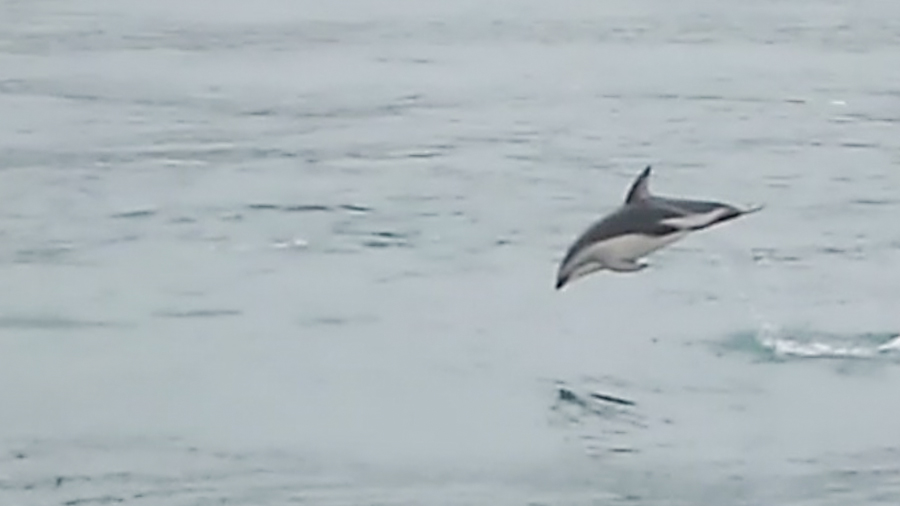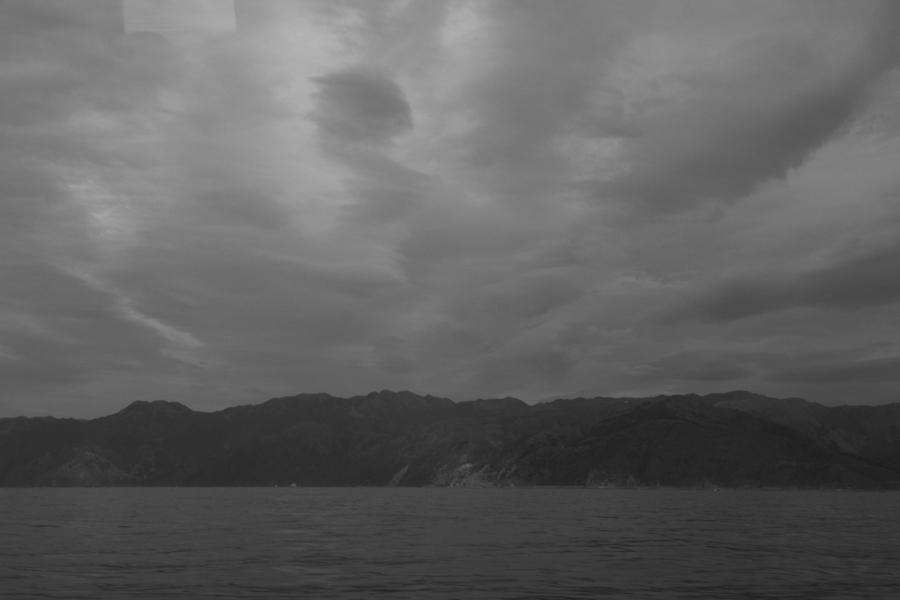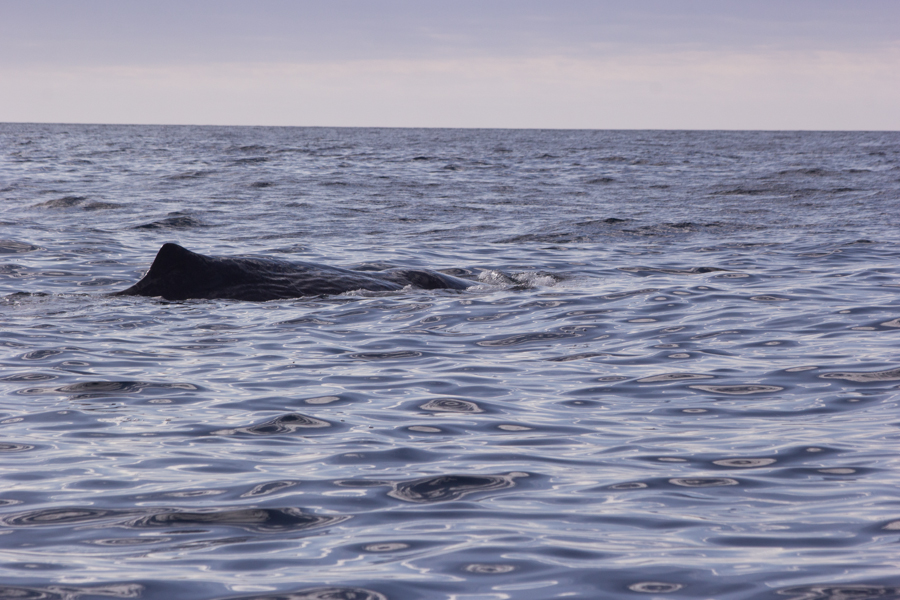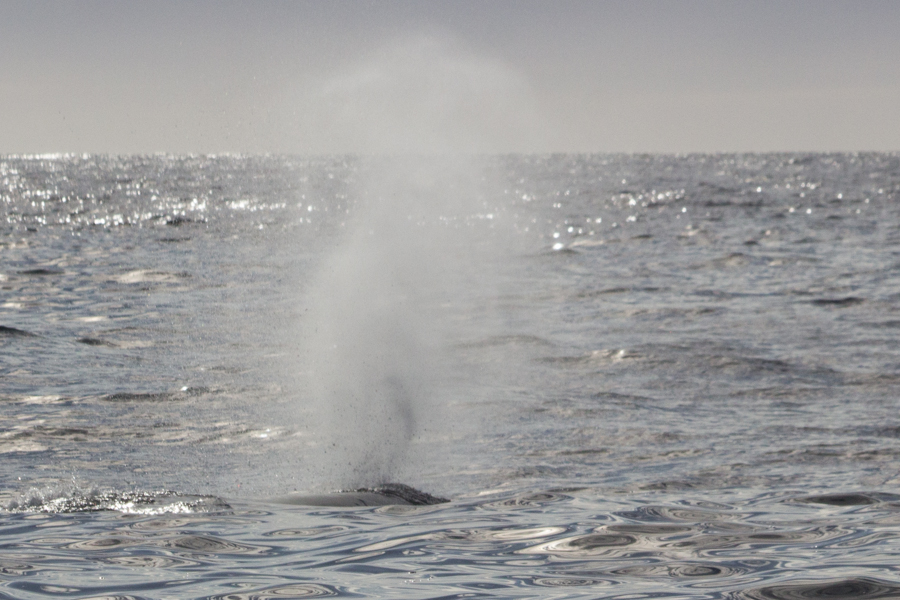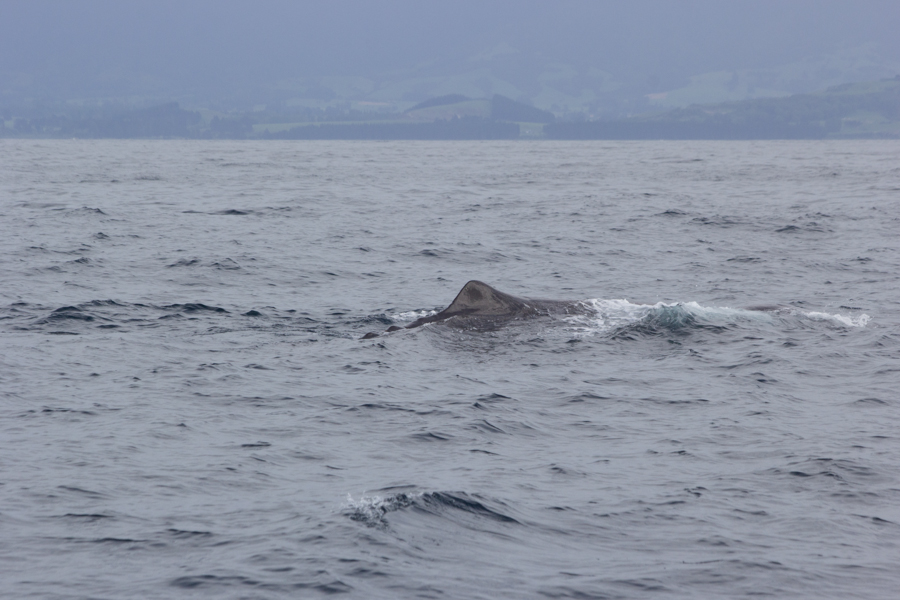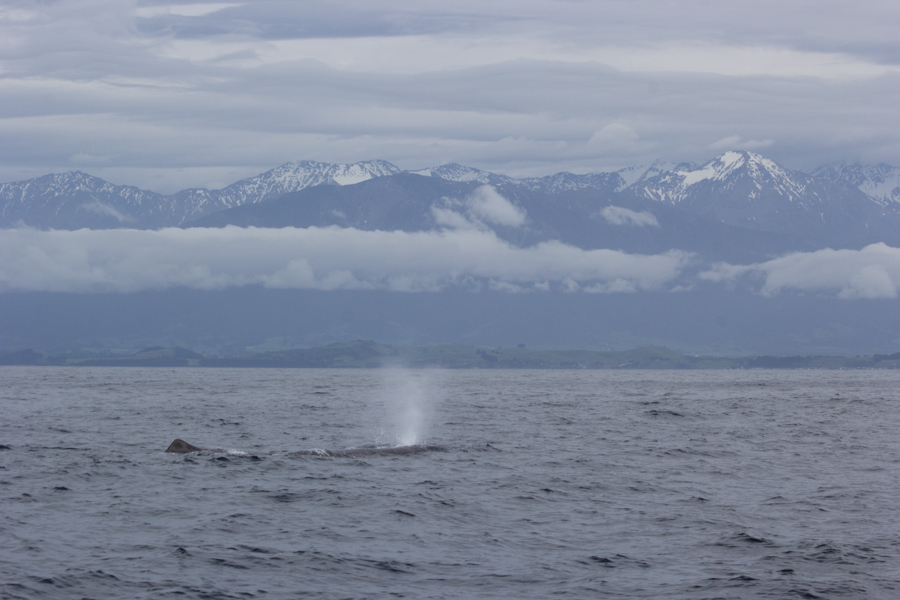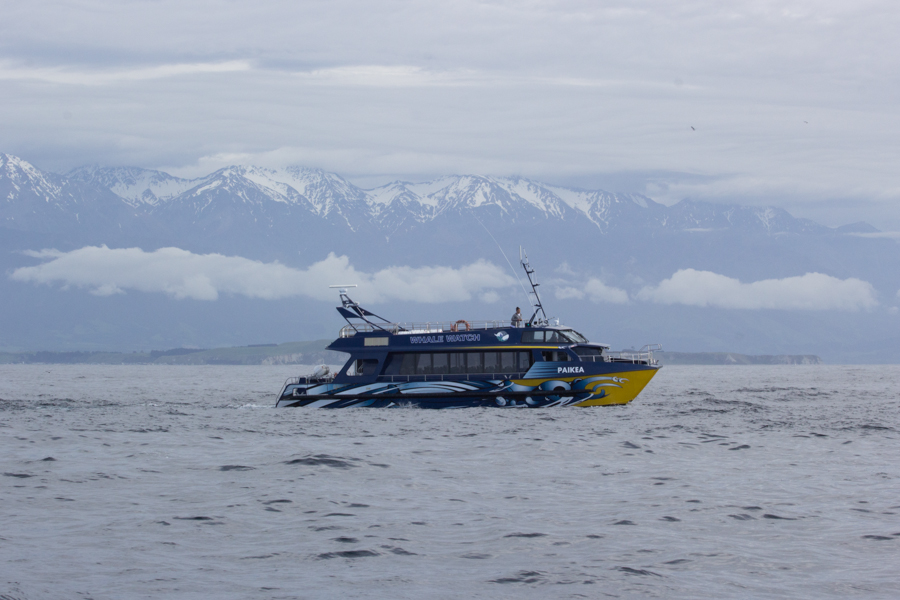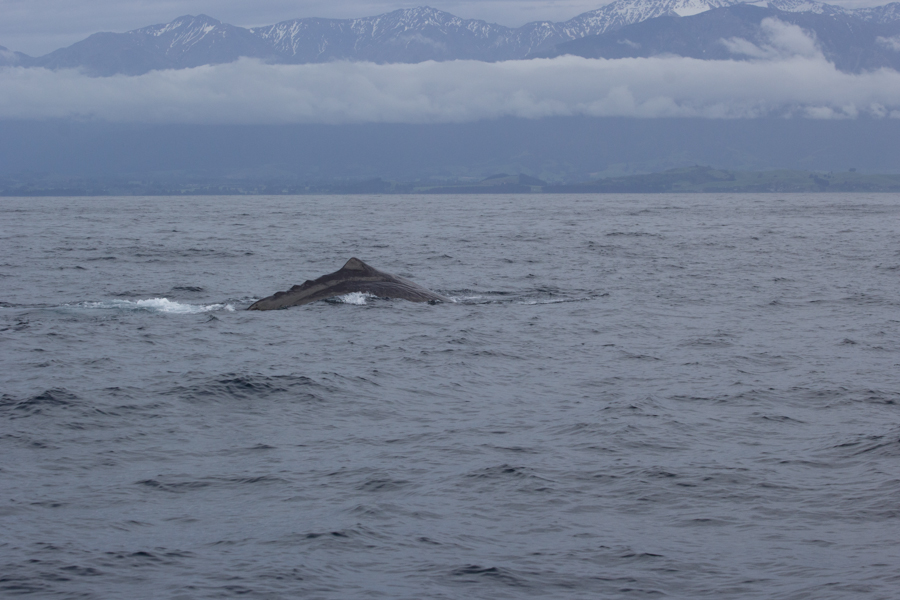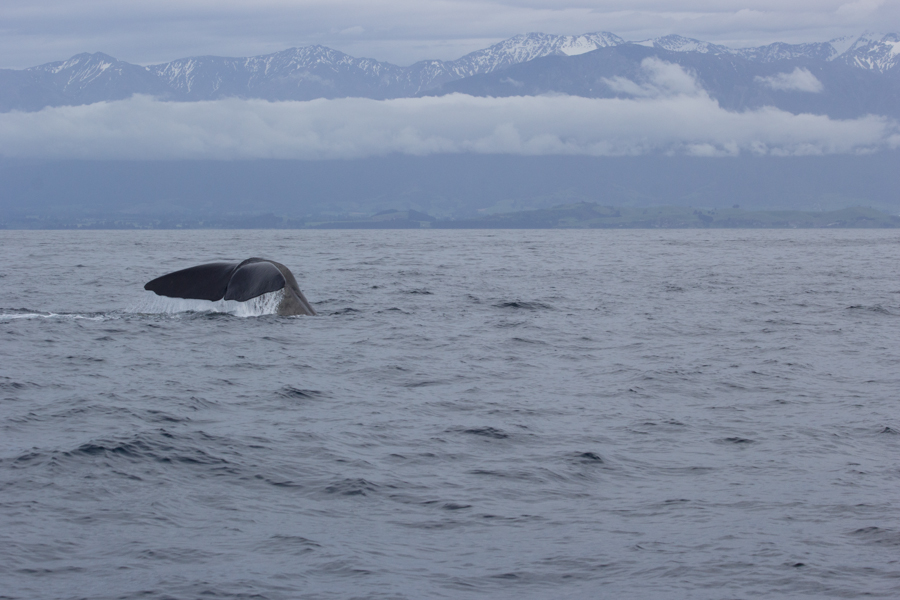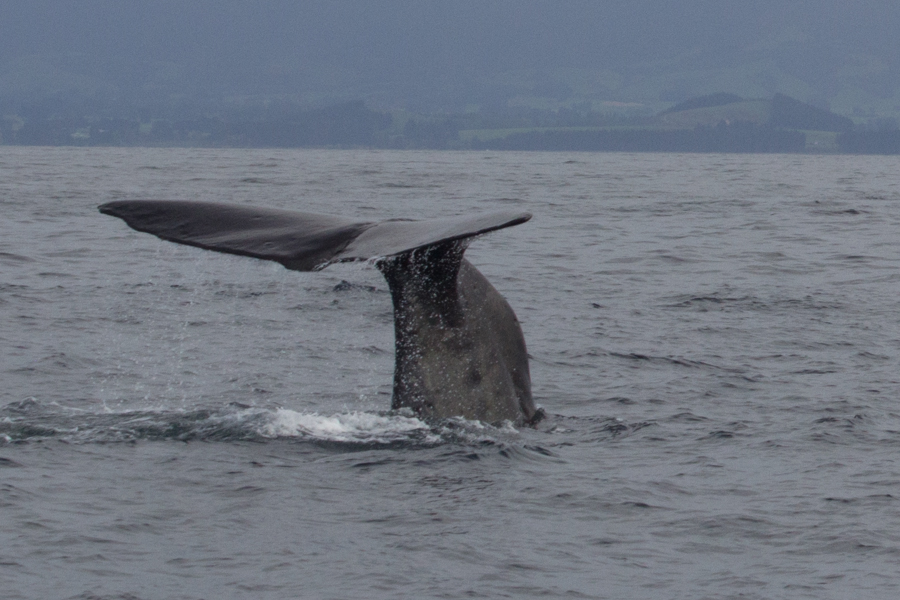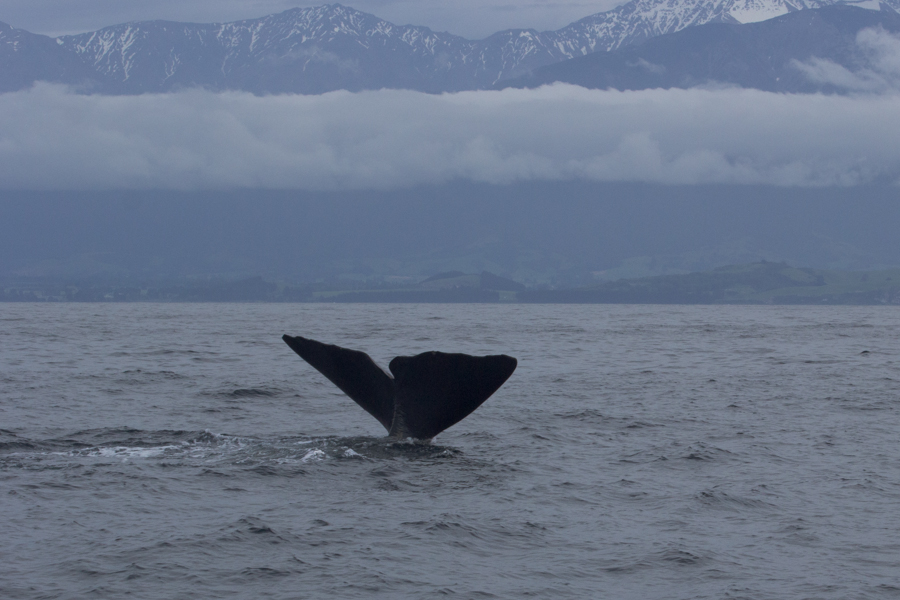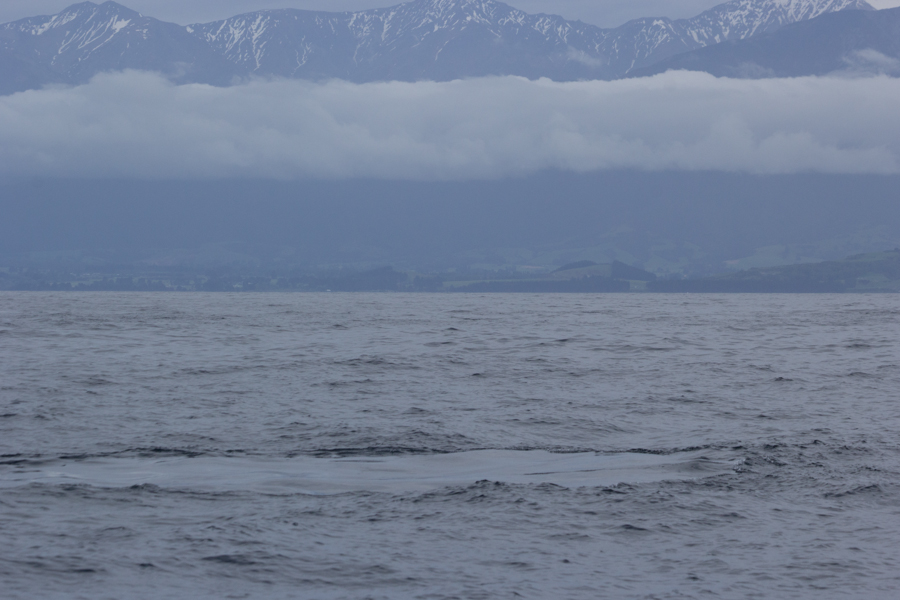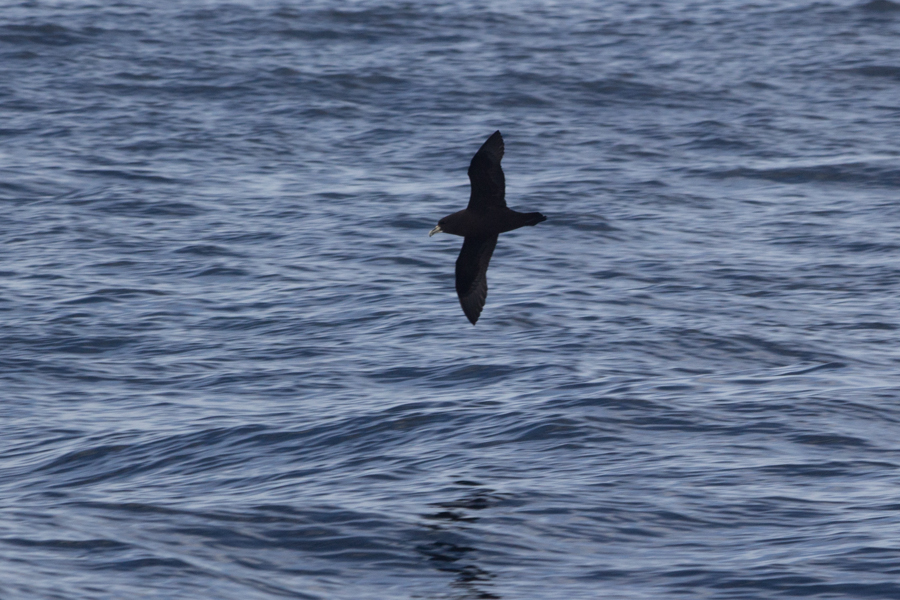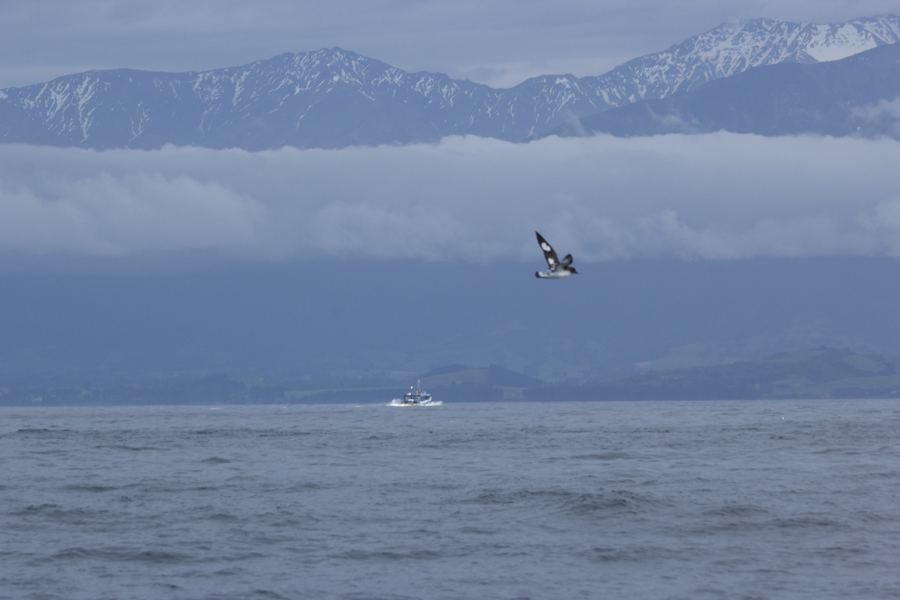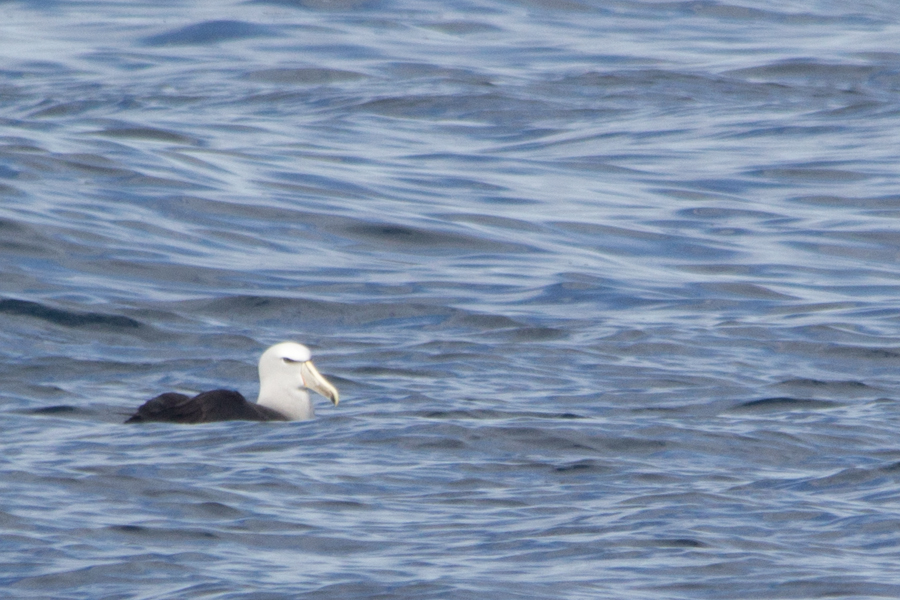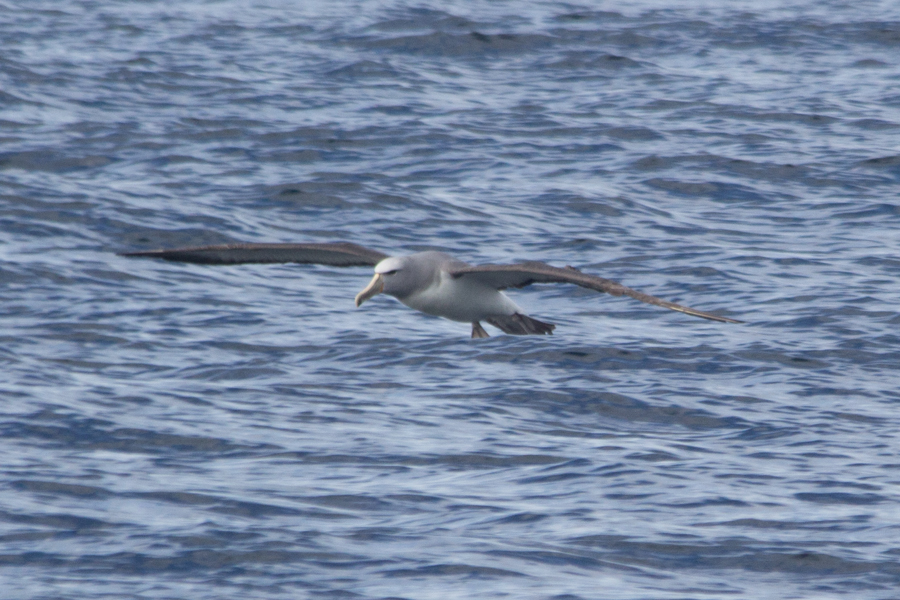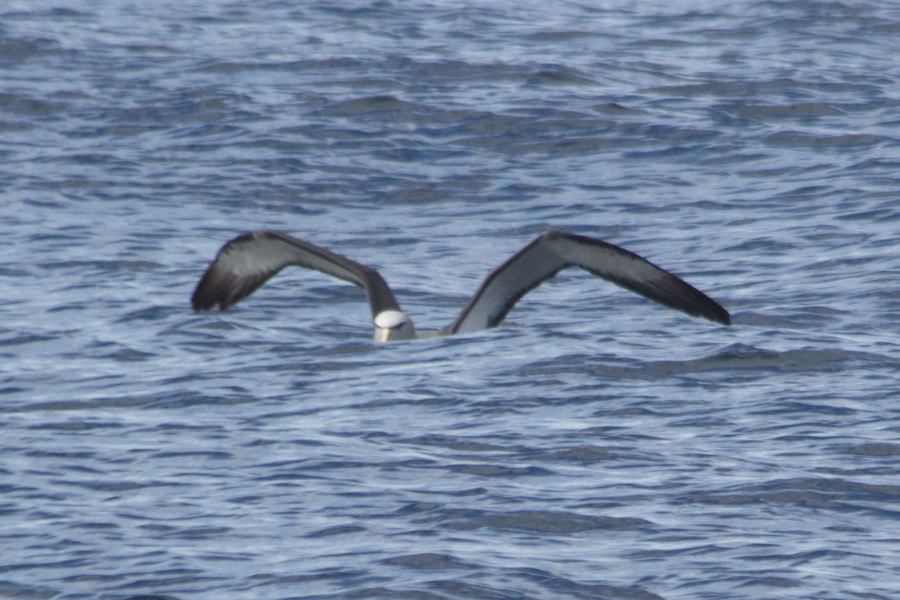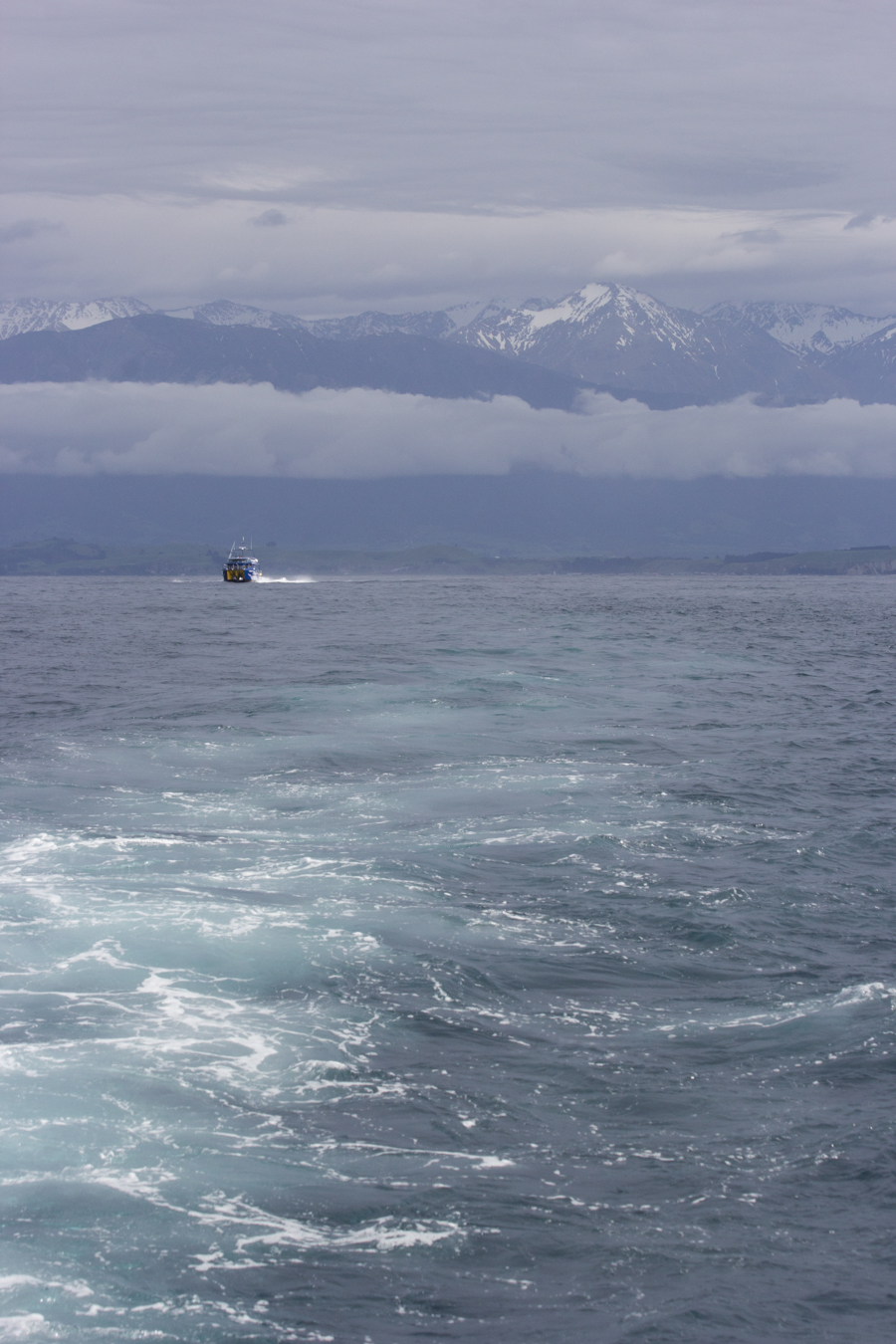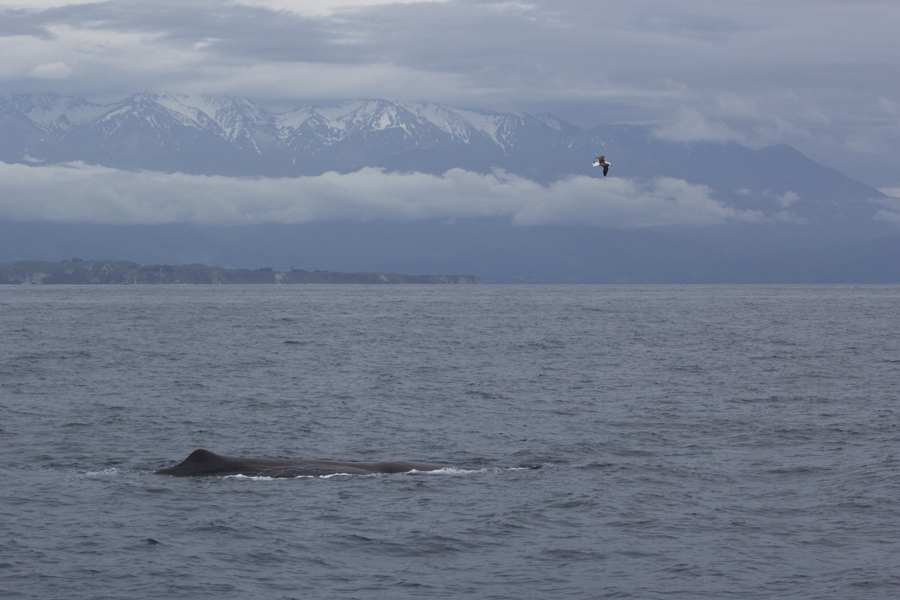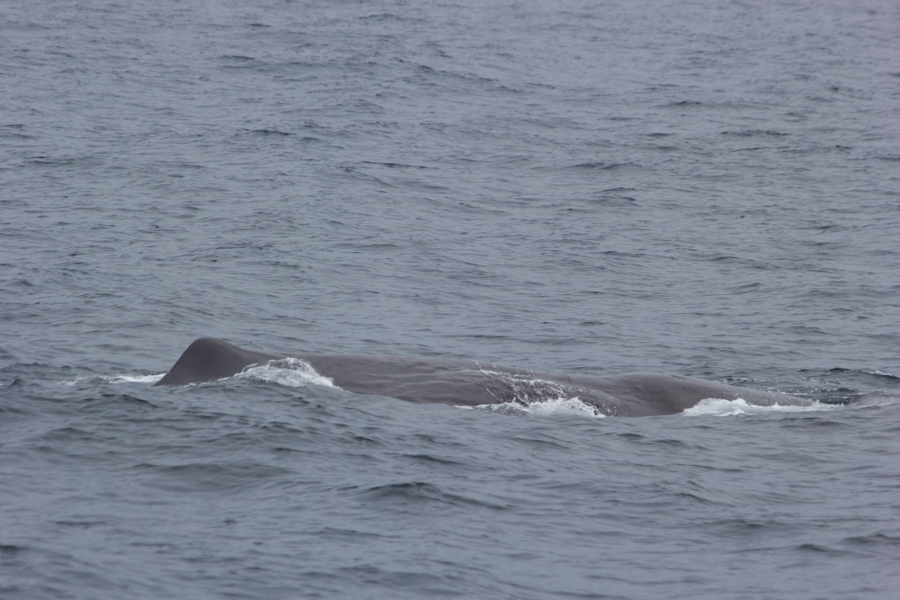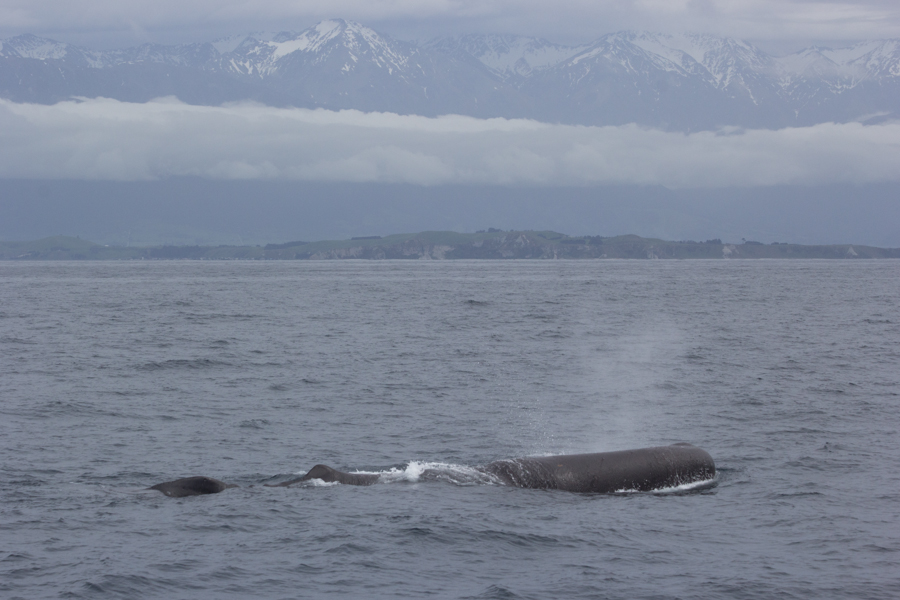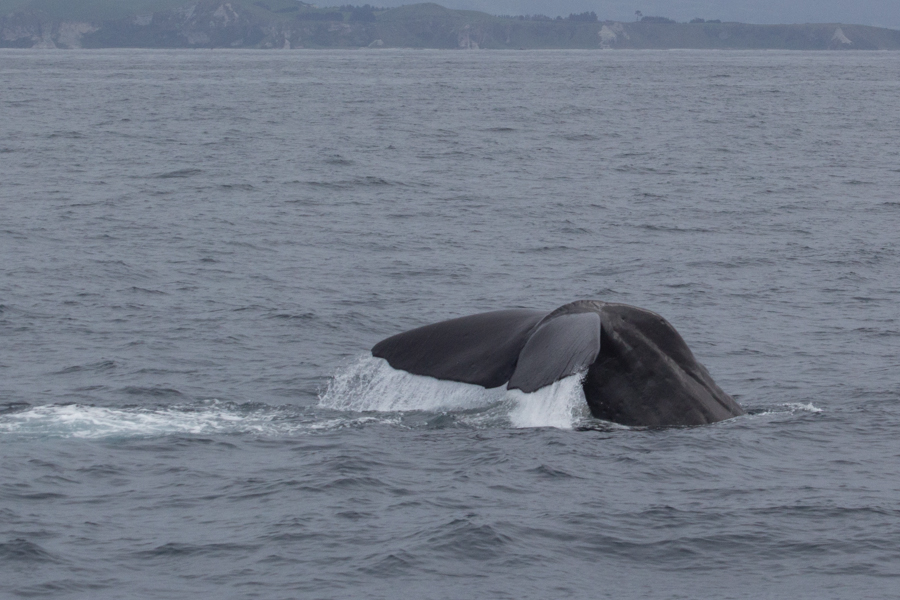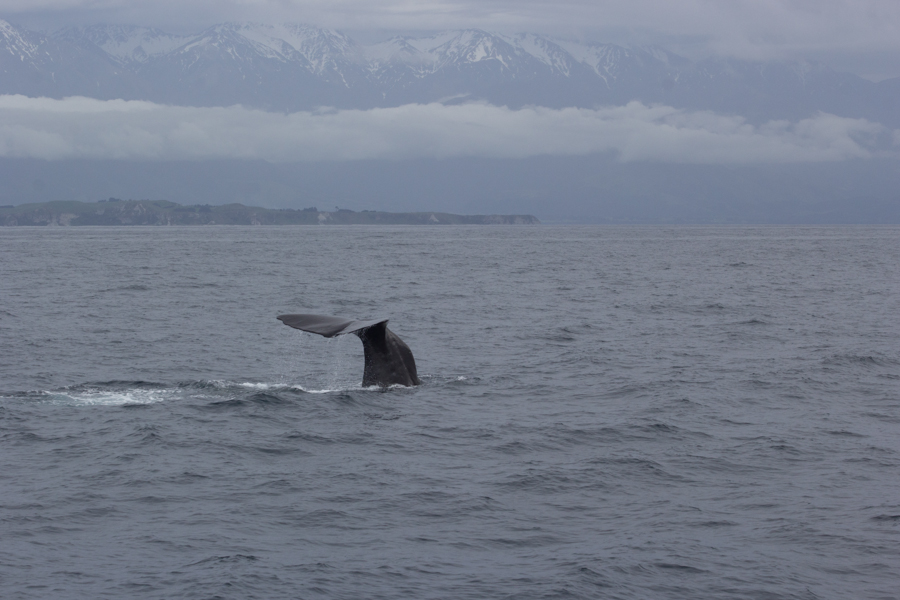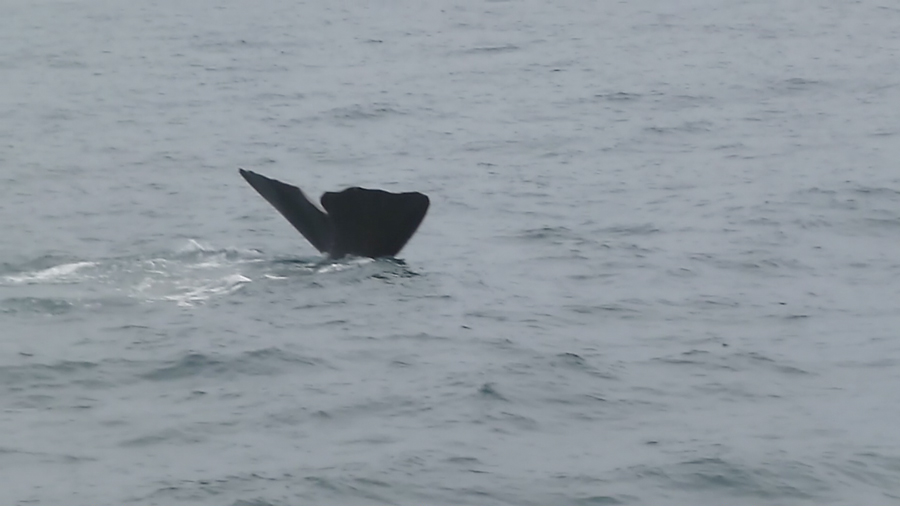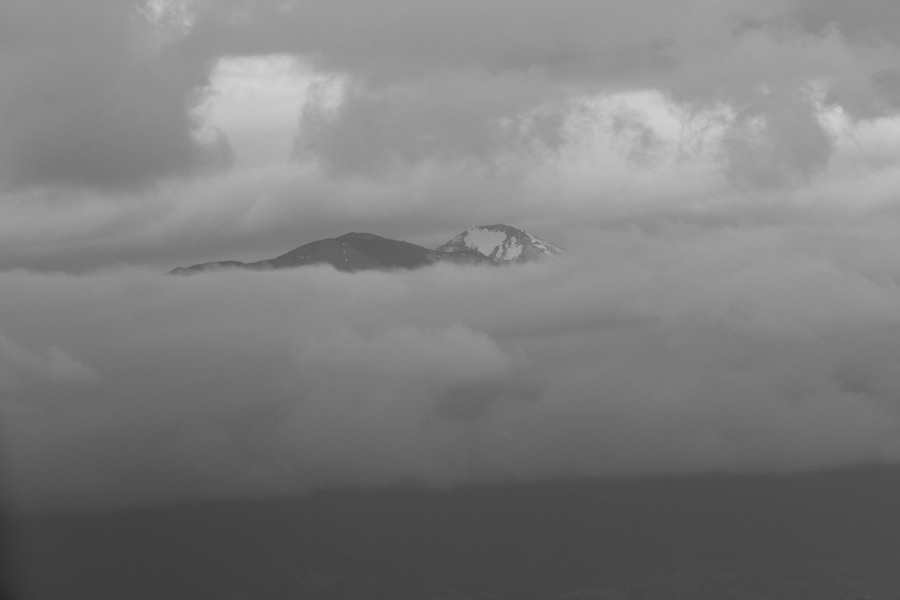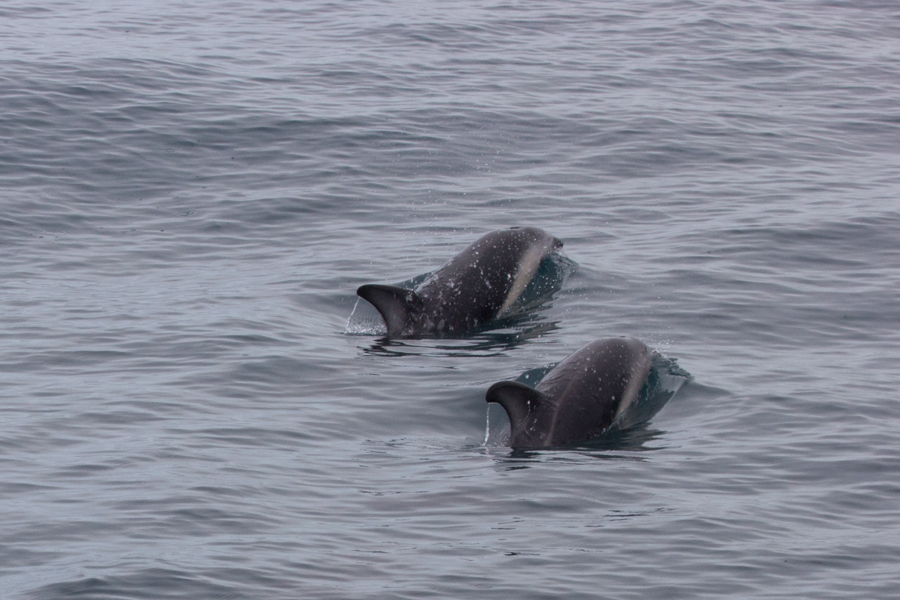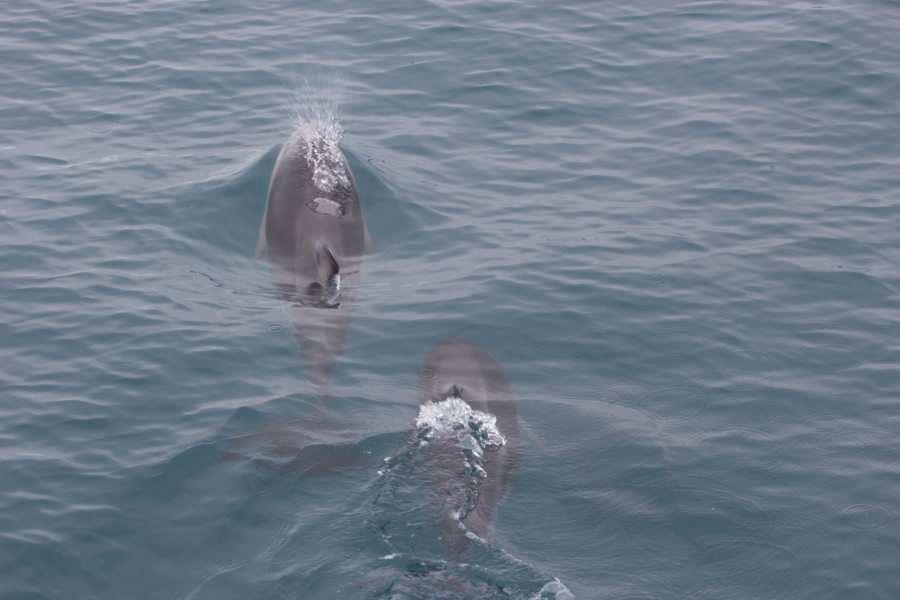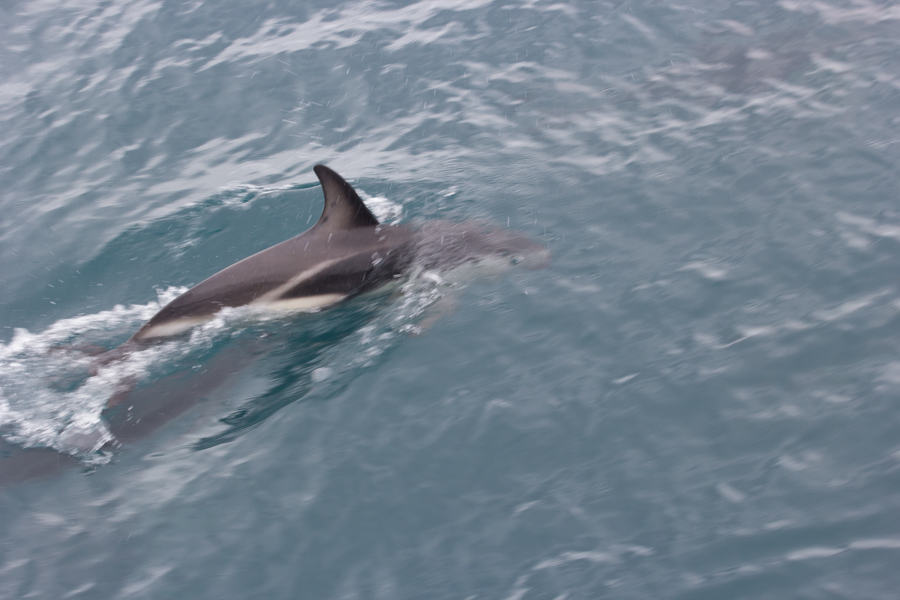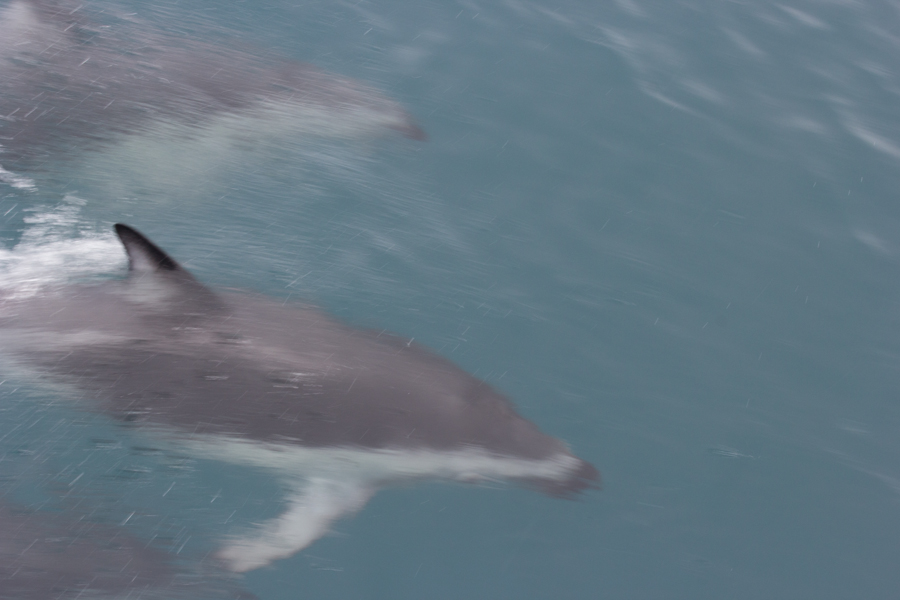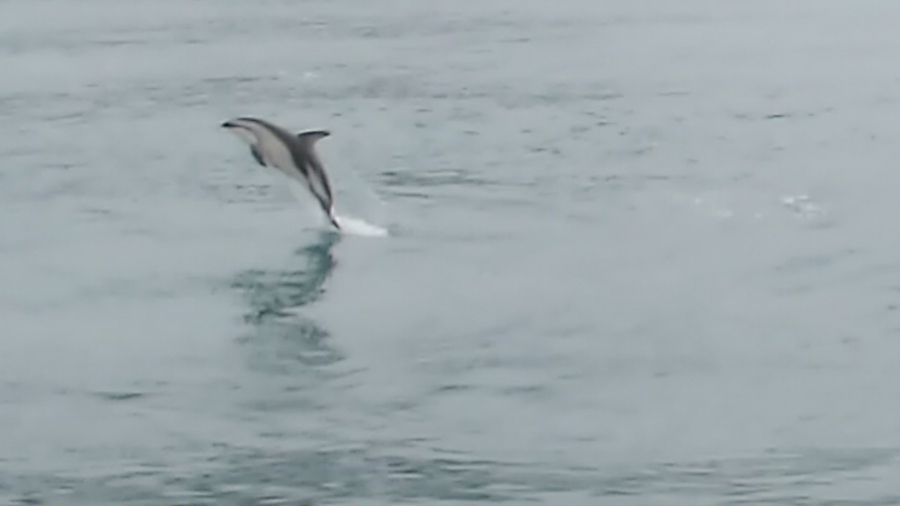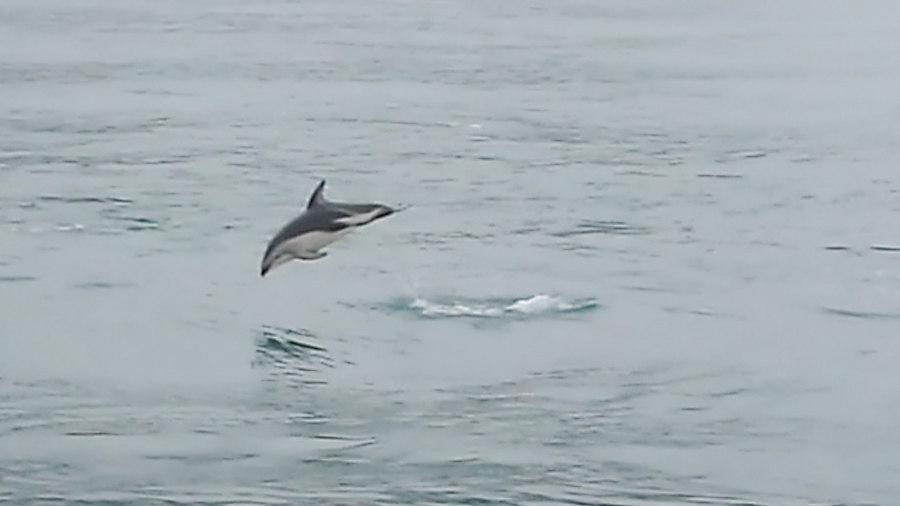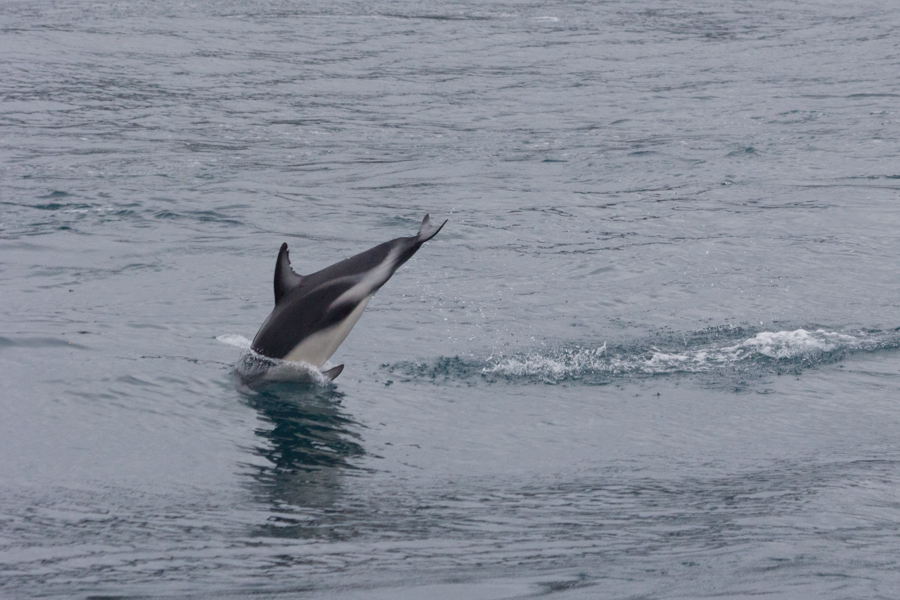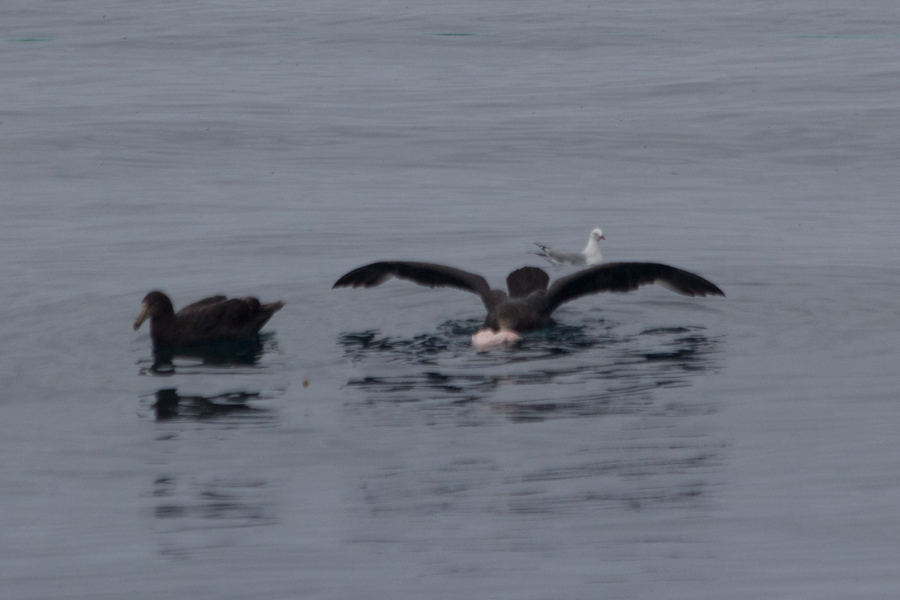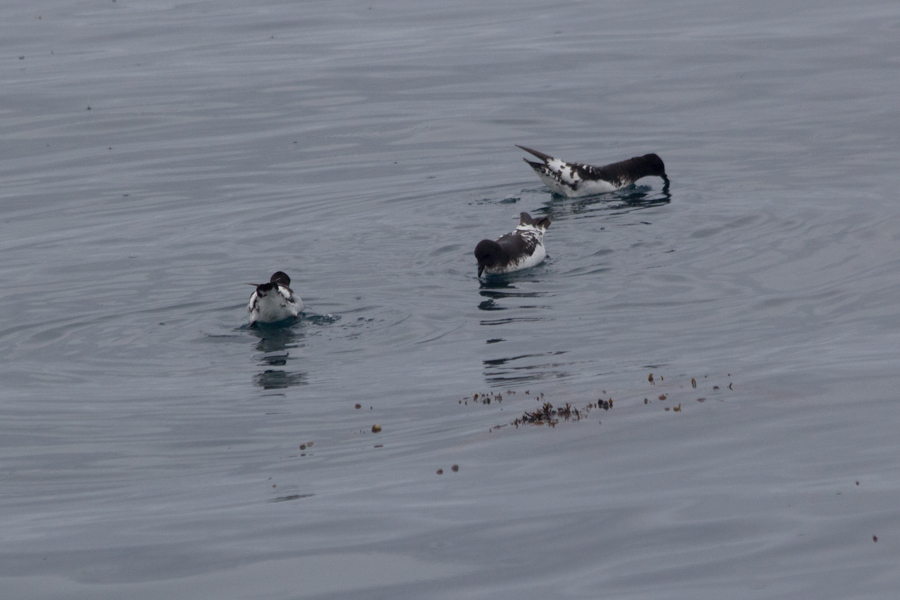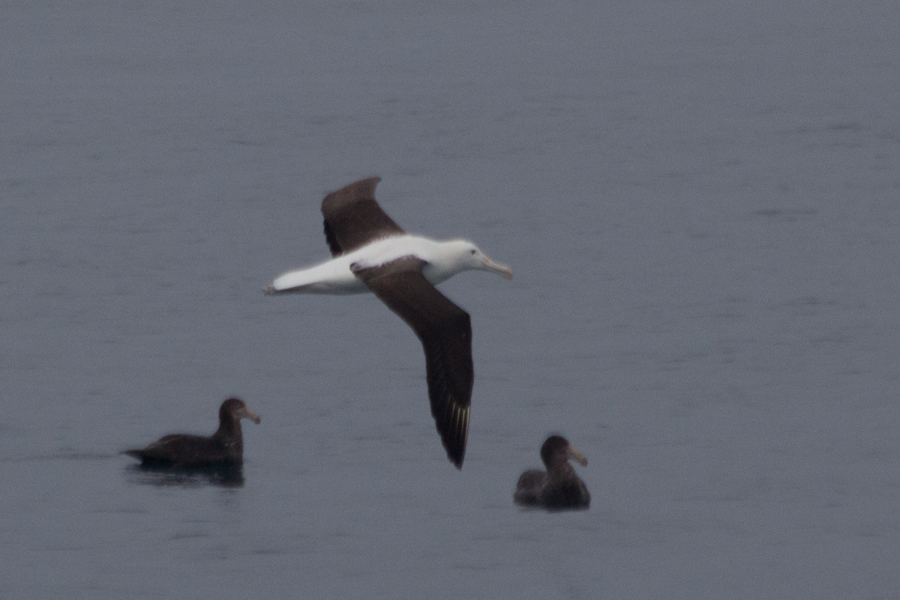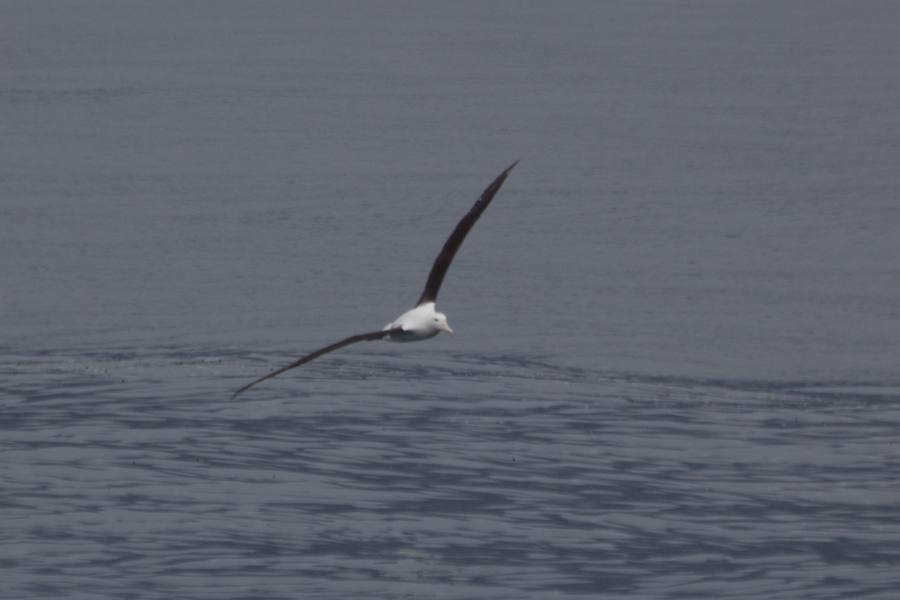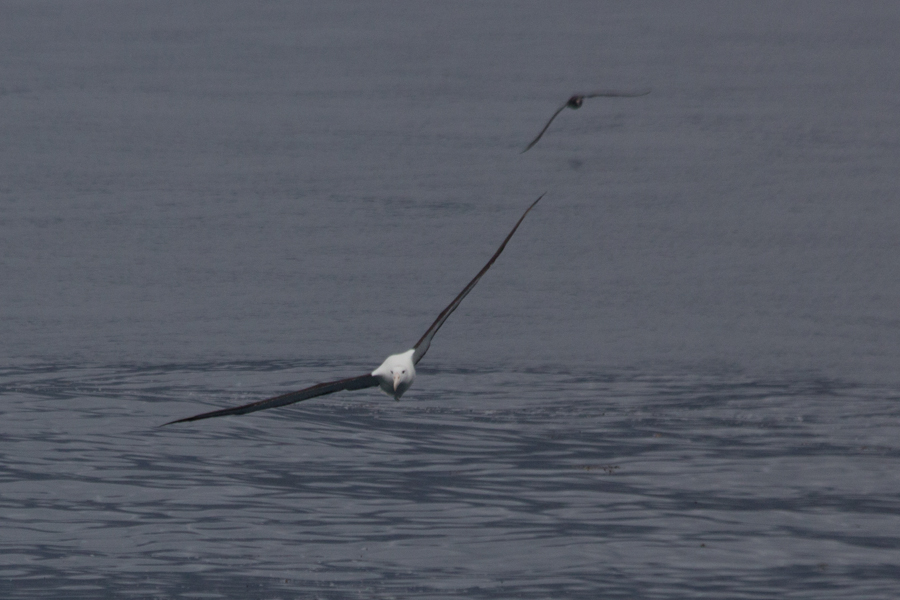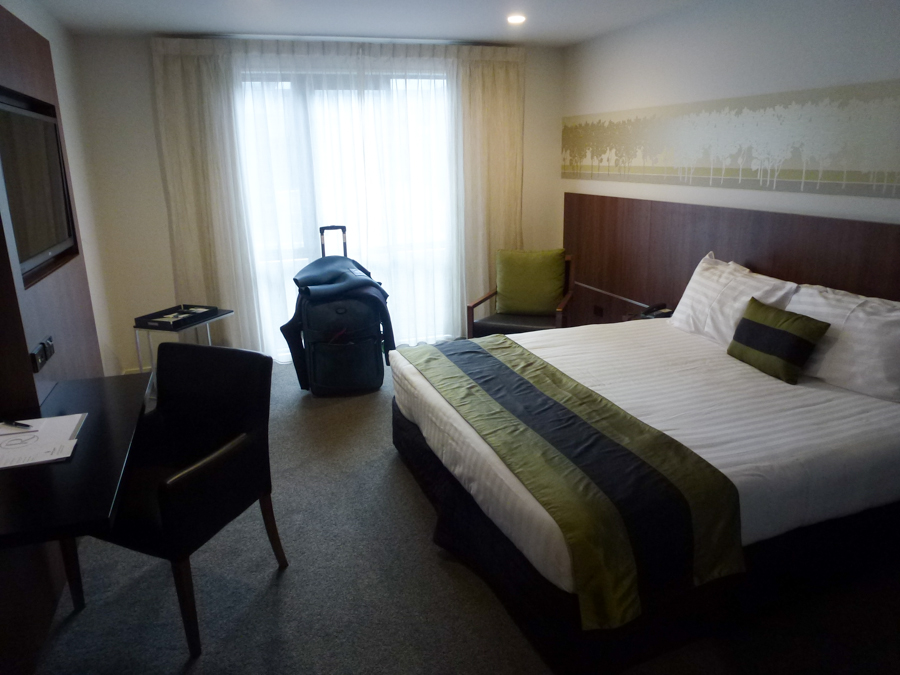Kaikoura
Thursday 10 November, 2016
Leaping Dusky Dolphin. Extraction from video by Eric.
There are three places in the world that have deep submarine canyons within an easy travel distance from shore, and these are some of the most excellent places in the world for marine life observation. The three locations are Trincomalee Bay, Sri Lanka, Monterey, California, and Kaikoura, New Zealand. Kaikoura is famous for whale-watching with Whale Watch Kaikoura and also offers opportunities for swimming with wild dolphins with Dolphin Encounters. We couldn't miss this, and we were rewarded with amazing looks at a wide variety of marine mammal and bird life.
Taking too long as usual to get out of our room in the morning and thus hurrying for our check-in time, we made our first driving on the wrong side of the road mistake. I started screaming when I saw an oncoming car, and Eric corrected in plenty of time.
We were a bit disappointed at the introduction to our whale watching tour, because we were told that the tour company had not been seeing any Sperm Whales recently and that we would likely only see Pilot Whales. Maybe we should have gone around the northwest side of the South Island to see the canyons there instead, but the travel agent said that would have taken an extra day that we did not have. But a Pilot Whale was better than no whale.
Weather as we were setting out on the boat.
Our guide, Hayley, greeted us in a long speech in Maori. Then she said in English, "Since you're all looking at me incomprehensively, I'm guessing you don't speak Maori." She asked us to make sure our seat belts were fastened, and, when we stared confusedly down at our hips, she laughed and said that there were no seat belts, but that that had been a test of our English comprehension.
Hayley heartened us by telling us that a scouting boat out that morning had seen a Sperm Whale, and we were headed for it! The whale had dived about 20 minutes before, and they typically stay down for 40 to 60 minutes. So, we might have some wait for it, but we should see it! Hayley was very excited herself, because she hadn't seen one in weeks.
Jonah the Sperm Whale.
Jonah came up for air after only 40 minutes, and we got great looks at him.
Jonah waving a fin in his spray.
Jonah's back.
We saw Jonah in the context of some lovely scenery.
Another whale-watching boat, with the scenery behind it. There was also a small plane above looking at Jonah.
Jonah preparing to dive for food again.
Jonah lifting his tail.
Jonah's beautiful tail.
And the final fluke. You just don't see sights like this every day. Even our boat crew was very excited.
The footprint left by Jonah's dive.
Of course, a whale watch is an opportunity not just to see whales but to learn something about them. The Sperm Whale preys on a wide variety of fish and sharks, creatures up to the size of the Giant Squid. Biologists found a Sperm Whale with a Giant Squid tentacle still attached to its face. The Sperm Whale is largest predator with teeth in the world. It only has bottom teeth; its top jaw just has sockets into which the bottom teeth fit. It also has no molars, but only pointy teeth. It does not chew its food. The teeth are for attacking and grasping prey that is swallowed whole. Since it eats large prey, it has a small tongue and a large throat. This distinguishes it from balleen whales like the Humpback, which eat tiny plankton and have keratin balleen instead of teeth, and have small throats and large tongues. Most interestingly, the Sperm Whale has an ability to stun its prey by making a gunshot-like sound. It does this by pushing air between two muscles in its forehead, and the sound happens when the muscles bang back together. You should not be in the water anywhere near a Sperm Whale, because, while you are not its typical prey, you could be injured by the stunning sound.
Our crew was so excited by seeing a Sperm Whale for the first time in weeks that they wanted to wait for Jonah to resurface. While he was diving, we got a look at some of the local bird life.
Westland Petrel. While this bird migrates to other places, it breeds only in New Zealand. Its status is vulnerable. Feral cats are a threat.
Cape Pigeon or Pintado Petrel. Native to New Zealand.
And we saw our first albatross species of the day, the White-capped Albatross.
While the White-capped is a lesser albatross species, it is the largest of the mollymawk albatrosses. It breeds only in New Zealand and is near threatened.
Soaring White-capped Albatross.
White-capped Albatross landing in the water.
We were surrounded by lovely scenery.
At last, Jonah surfaced again, and we got another look at him.
He surfaced to breathe for just a short time before diving again.
This time, Eric got the better picture of the fluke.
I was impressed with Whale Watch Kaikoura's expert whale-spotting technology. Even though we were on a 7:30 am tour, they sent out a scout boat ahead of us. They also used an underwater sonar hydrophone to listen for whale sounds. The whole operation was very knowledgeable and professional. The boat was spacious and, unlike the Interislander Ferry, there was plenty of room at the rails for everyone to see well.
The weather was looking harsh, but it wasn't actually raining most of the time.
Next, our boat took us to see a different sort of toothed predator, Dusky Dolphins.
The dolphins raced around the boat.
They are smaller than the more familiar Bottle-Nosed Dolphin, but still quite playful.
Eric got some video of one of the dolphins leaping and extracted a few stills.
My equipment has better image quality, but I was just a little bit late to the party.
Last, they brought us to a fishing boat so that we could see some more of the birds.
I didn't get a great picture, but I wanted to show you the native Northern Giant Petrel.
Native Southern Black-backed Gulls.
We saw the Salvin's Albatross, but I didn't get a good picture. It breeds only in New Zealand and its status is vulnerable.
And the Northern Royal Albatross, a greater species! It has a 3.6-m wingspan.
This is an endangered species that breeds only in New Zealand.
This bird has locking shoulder joints that allow it to fly with minimal energy in a process called dynamic soaring. It rarely needs to flap its wings.
The Northern Royal Albatross has some other unusual abilities. It can shut down half of its brain at a time and thus sleep while flying. Since it flies over large areas with no freshwater, it has an ability to separate salt from seawater and thus drink seawater. It sheds the salt through vents in its face, and fishermen originally thought the albatrosses were crying.
Whale Watch Kaikoura was an incredible tour. But, after a little lunch in town, we went on to something even more adventurous, Dolphin Encounter, where we swam in the water with wild Dusky Dolphins!
Dolphin Encounters had wetsuits for us, but, as they were two 5-mm layers, I preferred to wear my own, with one 7-mm layer and one 8-mm layer, plus special sealing cuffs on the neck and limbs. I also brought my own titanium gloves; the other swimmers went without gloves. We were given warm socks and wimpy snorkeling fins. I used my own prescription snorkel mask. We had to wear the wetsuits on the bus out to the boat, which would have put us at risk of hyperthermia had we put them all the way on. We had to bring our clothes with us. It was a lot to carry! I brought the camera, but was too wet to take any pictures. The afternoon had become cold and rainy.
Swimming with Dusky Dolphins was quite an experience! You're not allowed to touch them, but they swim right under and around you. They like to swim in circles, and you can do it with them if you can keep up. They are very fast! We went to four different sites and swam around with them for a few minutes at each one. Eric was particularly excited when one of the dolphins swam around him three times.
However, swimming with dolphins is hard. As I said, they are fast! They also become bored and move on easily. We were carefully instructed that these were wild animals, they were not fed or induced in any way, and that they would only swim with us for as long as they chose. We needed to get off the boat very quickly as soon as the signal was given that the propellers were off, and we needed to keep the dolphins entertained as much as possible. This meant making noises. Dolphins live in a world of sound and are very dependent on it. We needed to sing and call out to them, or they would leave us quickly; we must make continuous noise. When we did this more successfully, they did stay with us longer. And, even in a wetsuit, the water was cold, 13.6C or about 56F. That's considerably warmer than the Monterey Bay, but I was still cold. We were 20-30 years older than any of the other swimmers on the boat, but we stayed out almost the longest. I'm sure my heavier wetsuit and titanium gloves helped me.
The crew of the boat was extremely helpful, and I was impressed at the strength of the women in helping lift us back onto the boat deck. They gave us blankets and served us hot drinks at the end. We were excited to meet Marina, from the City of São Paolo, and to converse with her in Portuguese. She said that, while we spoke slowly, our accents were great.
We saw a large black bird flying beside the boat, and Marina told us it was a Hutton's Shearwater. This is a very unusual bird, because it nests only in the Seaward Kaikoura mountains off the shore. Marina said it was a rare bird and we were lucky to see it. The species is endangered.
After all of this excitement, we still had to drive two hours to Christchurch for the night. I had been doing my best, largely unsuccessfully, to enjoy our trip and not think about the American election results. But I started to sob when Hayley mentioned the Monterey Bay canyon, because all of our American national treasures may lose their federal protection. California might protect Yosemite and Monterey at the state level, but Alaska will surely drill all over the place as soon as the hand of the feds is lifted. And our economy will surely be trashed, and tax code reforms may well render me jobless. I had had many future adventures planned for us, Svalbard, Patagonia, the Galapagos, and we now this may be the last adventure we'll ever be able to afford. So, when the hotel desk clerk asked us where we were from, I just started to cry. He felt badly and gave us a couple of free drink coupons for the bar.
Eric took a quick picture of our room at the Rydges Latimer Christchurch.
There didn't seem to be any restaurants in the immediate vicinity of the hotel, so we found a cache in a park across the street and had dinner at the bar to save time and trouble. I chatted about the election results with my American expat friends in Switzerland. But we've got to find a way to put this out of our minds so we can enjoy what may well be our last adventure trip.
On to Aoraki/Mt. Cook National Park Part 1.
